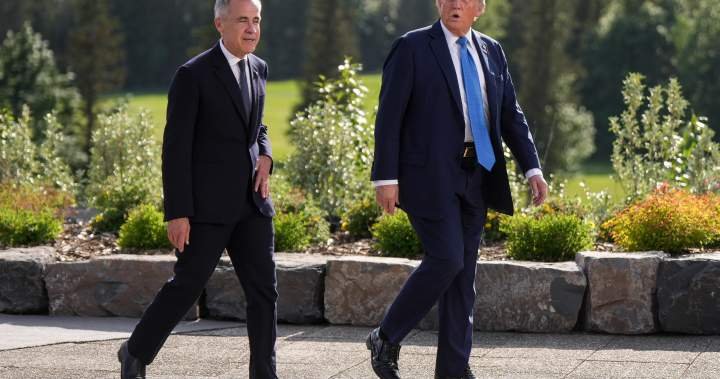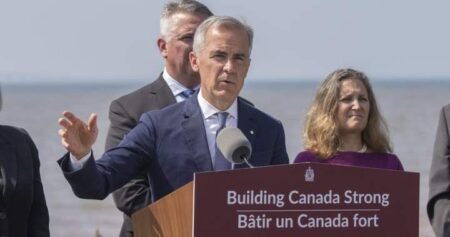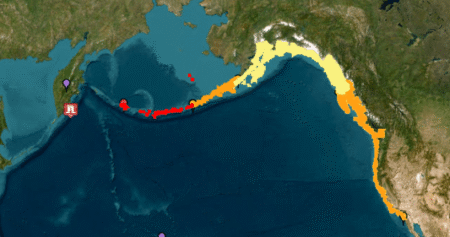As the deadline looms for a new trade deal between Canada and the U.S., economists say what the deal contains could determine a key possibility — how bad a potential recession could be.
On Monday, Prime Minister Mark Carney said he would only sign a deal that was “a good deal for Canada” and that “negotiations are at an intense phase” towards a new trade deal with the U.S.
If one isn’t reached by Aug. 1, U.S. President Donald Trump has threatened to hit Canada with more tariffs of 35 per cent.
At the same time, economists are watching closely for the risk of a recession.
“We are so far sticking to a view that we see a very shallow technical recession in Canada for the second quarter, third quarter. Very mild contraction,” said Sal Guatieri, director and senior economist at BMO Capital Markets.
However, that depends on one key caveat.
“That assumes we do work out a trade deal with the U.S. and it keeps that average effective tariff rate close to six per cent (and) does not pile on too many new sectoral duties in the months ahead,” he added.

Get daily National news
Get the day’s top news, political, economic, and current affairs headlines, delivered to your inbox once a day.
With a six per cent effective tariff rate, Canada’s economy could potentially start recovering by the end of the year, Guatieri said.
“It does hurt, but it’s manageable and something that Canadian businesses ultimately could adjust to and live with.”
The reason the effective tariff rate on Canada is relatively low, at six per cent, is that goods that comply with the Canada-U.S.-Mexico Agreement (CUSMA) were exempt from Trump’s broad-based tariffs back in April.
Not everyone agrees that a recession is likely, either.
“We don’t have a recessionary outlook again for later this year. If CUSMA exemptions do hold, which is what we’re expecting right now, we don’t expect there will be significant changes to the outlook either,” said Claire Fan, senior economist at RBC.
While Canada is expecting a trade deal with some tariffs, Fan said CUSMA exemptions might help Canada avoid a worst-case scenario economic downturn since it puts it ahead of the U.S.’s other major trade partners.
“It reflects a comparative advantage as a key exporter to the United States. It’s not so much about the exemptions themselves, but more so what it means for Canadian exporters relative to, let’s say, exporters from Europe or from one of the other major U.S. trade partners,” she said.
If the status quo holds, Fan expects that the “bulk of the damage is already done” to Canada’s labour market. However, if Trump’s tariffs on Canadian steel, aluminum and automobiles continue after Friday, those sectors could see further losses.
“It’s a blow for the auto industry (and to) steel and aluminum. There will be some pain there, maybe further layoffs. But for the overall economy and other industries, it is a manageable tariff to absorb, Guatieri said.
“We are seeing very pronounced damage in sectors where you would expect damage to be showing up. These are largely very trade-exposed sectors. Manufacturing is one, and a lot of the related sectors, for example, warehousing and transportation,” Fan said.
So far, the damage from tariffs has been most heavily localized in southern Ontario and Quebec, Fan said.
“If you were to look at the unemployment rate in southern Ontario, it’s approaching 10 to 11 per cent in Windsor and is really elevated in other parts like Peterborough as well. In Toronto, too, which is above where the national average is,” she said.
If CUSMA exemptions hold, Guatieri expects much of the country to escape the worst effects of Trump’s trade war.
“We think most of the rest of the country is somewhat insulated from this trade war. Unfortunately, Ontario and Quebec are not,” he said.
Read the full article here
















